Heat network projects: quarterly report - June 2024
Information on the capital and pre-capital projects which have been funded through Scotland's Heat Network Fund, Low Carbon Infrastructure Transition Programme, Social Housing Net Zero Heat Fund and the Heat Network Support Unit.
Inverness West Bank
Lead organisation:
The Highland Council
| Metric | Value |
|---|---|
| Annual Heat Demand (GWh) | 13.1 |
| Total CAPEX (£m) | 14.9 |
| IRR (%) | 3.6% |
| Lifetime Carbon Savings (tCO2) | 109,188 |
Project Stage:
Pre-capital – Detailed feasibility study complete
Technology type(s):
Proposed new heat network
Location:
Inverness
Type of support:
£36,000 HNSU grant
Project Timeframe:
Feasibility report completed April 2023. Council developing next steps.
Project description:
The Highland Council are exploring the potentil for a district heating network within Inverness. The main buildings identified for connection include Inverness Leisure Centre, Inverness Ice Centre, Highland Archive and Registration Centre, Inverness Botanic Gardens, Highland Council HQ and Eden Court.
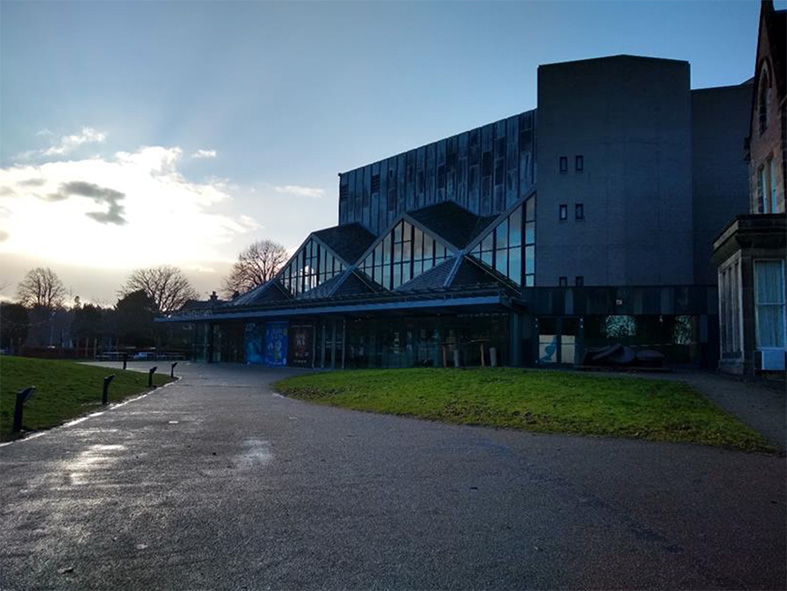
Inverness Castle
Lead organisation:
The Highland Council
| Metric | Value |
|---|---|
| Annual Heat Demand (GWh) | 1.07 |
| Total CAPEX (£m) | 2.8 |
| IRR (%) | 3.6% |
| Lifetime Carbon Savings (tCO2) | 6,480 |
Project Stage:
Pre-capital – Detailed feasibility study complete
Technology type(s):
Proposed new heat network
Location:
Inverness
Type of support:
£27,500 HNSU grant
Project Timeframe:
Feasibility report completed April 2023. Council developing next steps.
Project description:
Highland Council are developing a district heating network within the immediate area surrounding Inverness Castle which is a council administration centre. Potential heat sources include ground source heat pumps, river source heat pumps, sewer heat recovery, biomass and large-scale air source heat pumps.
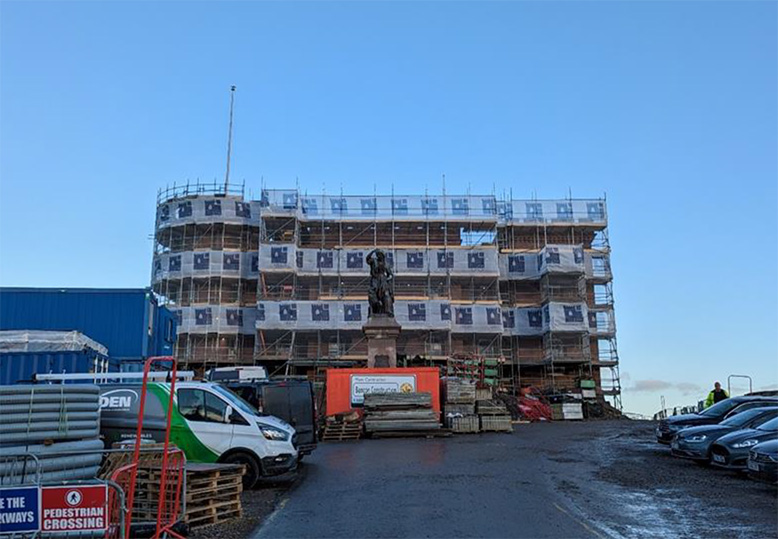
Perth City Centre Heat Network
Lead organisation:
Perth and Kinross Council
| Metric | Value |
|---|---|
| Annual Heat Demand (GWh) | 12.0 |
| Total CAPEX (£m) | 10.9 |
| IRR (%) | 6.5% |
| Lifetime Carbon Savings (tCO2) | 101,742 |
Project Stage:
Pre-capital – Detailed feasibility study complete
Technology type(s):
Proposed new heat network
Location:
Perth
Type of support:
£36,000 HNSU grant
Project Timeframe:
Feasibility report completed in March 2023. Council considering next steps as part of LHEES.
Project description:
Various non-domestic and domestic buildings including a concert hall, council offices, tower blocks and a hotel have been identified within Perth city centre that are potential connections for a heat network. A range of low carbon heat sources are recommended to be considered including river and ground source heat pumps.
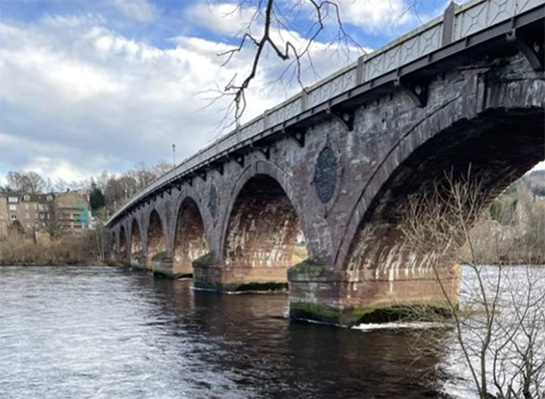
Glasgow Polmadie
Lead organisation:
Glasgow City Council
| Metric | Value |
|---|---|
| Annual Heat Demand (GWh) | 24.1 |
| Total CAPEX (£m) | 22.8 |
| IRR (%) | 3.6% |
| Lifetime Carbon Savings (tCO2) | 146,617 |
Project Stage:
Pre-capital – Detailed feasibility study complete
Technology type(s):
Proposed new heat network
Location:
Glasgow
Type of support:
£44,000 HNSU grant
Project Timeframe:
Feasibility report completed September 2023. Additional technoeconomic work completed in April 2024. Council considering next steps.
Project description:
Project secured grant funding to undertake a review of prior feasibility work to determine the potential for the Glasgow Recycling and Renewable Energy Centre (GRREC) to be used as a heat source for a district heat network serving a mix of domestic and non-domestic properties in the south side of Glasgow.
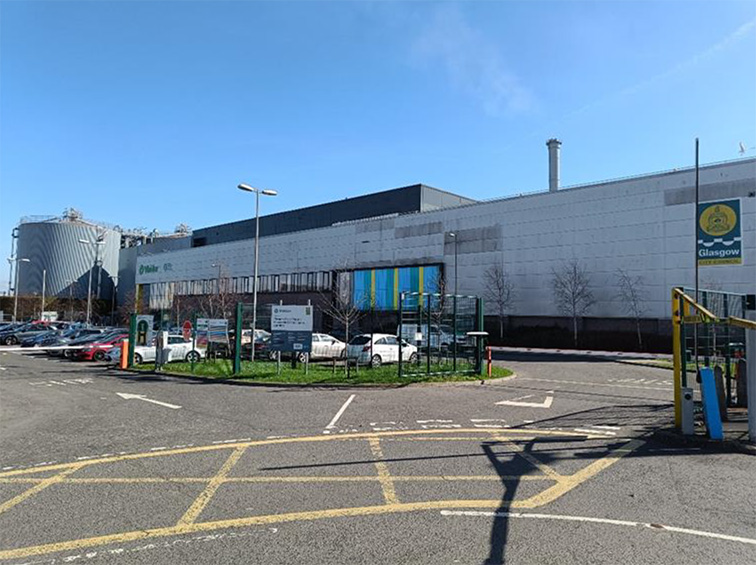
Queen’s Quay Extension
Lead organisation:
West Dumbartonshire Council
Project Stage:
OBC completed – commercialisation
Technology type(s):
Extension of existing heat network (heat source: water source heat pump)
Location:
Clydebank
Type of support:
Capacity building and OBC support
Project Timeframe:
OBC completed in June 2023. Council considering next steps.
Project description:
The project proposes the extension of the Queens Quay heat network to connect to the Golden Jubilee Hospital.
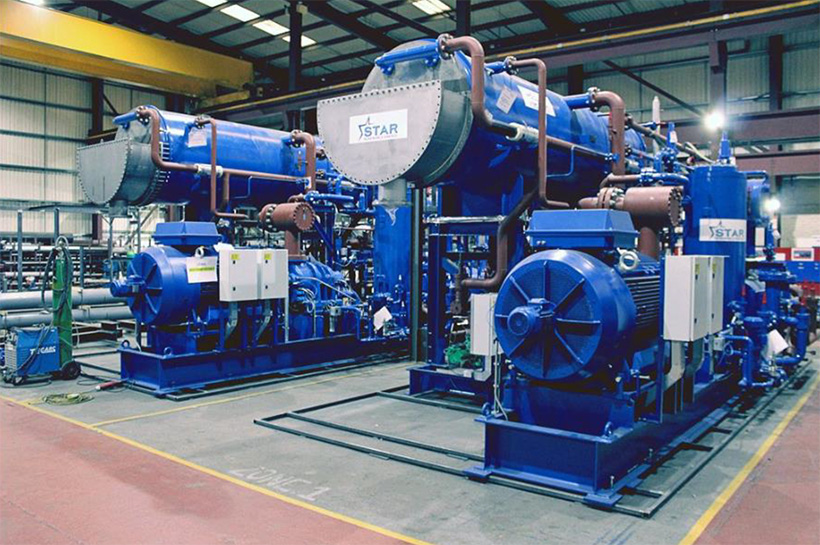
Granton Waterfront
Lead organisation:
City of Edinburgh Council
| Metric | Value |
|---|---|
| Annual Heat Demand (GWh) | 30.6 |
| Total CAPEX (£m) | 31.1 |
| IRR (%) | 12% |
| Lifetime Carbon Savings (tCO2) | 21,572 |
Project Stage:
Pre-capital – Commercialisation
Technology type(s):
Proposed new heat network (proposed heat source: sewer source heat pump)
Location:
Granton, Edinburgh
Type of support:
£50,000 Scotland’s Heat in Buildings Development Funding Invitation Grant
HNSU Advisory Support
Project Timeframe:
Contract Notice published May 2023. Council approved the appointment of development partner Vattenfall during November 2023, and are targeting financial close (signing of concession agreement) in Q3 2024.
Project description:
The project proposes a new heat network to serve new buildings on the Granton development site. The site is of mixed use with approx 3000 homes and 9,000m2 non-domestic space, including a primary school, medical centre, business, retail and leisure. The projects aims to create the heat network with the potential to connect to nearby areas of heat demand to the south of the site, including existing schools and a leisure centre.
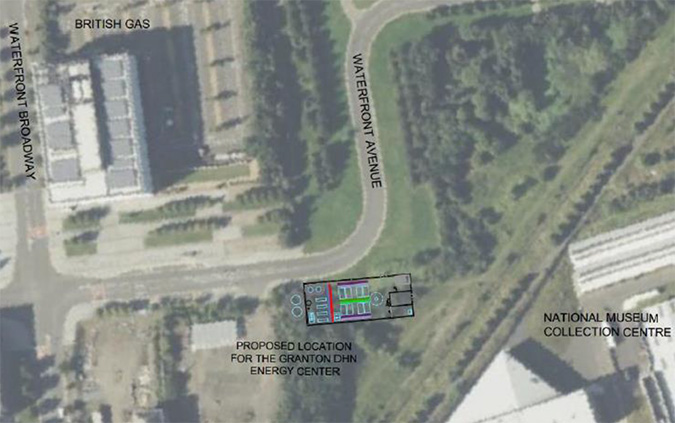
Edinburgh Airport Low Carbon Heat Network
Lead organisation:
Edinburgh Airport Ltd
Project Stage:
Pre-capital - OBC complete
Technology type(s):
Proposed new heat network
Location:
Edinburgh Airport, Edinburgh
Type of support:
£42,350 Scotland’s Heat in Buildings Development Funding Invitation Grant
Project Timeframe:
OBC completed November 2023. Stakeholder considering next steps.
Project description:
The project will develop the technical and economic case for a district heat network which would supply heat to Edinburgh Airport, while acknowledging opportunities for future expansion to the Crosswinds and West Town developments (eg with regard to energy centre/pipe sizing).
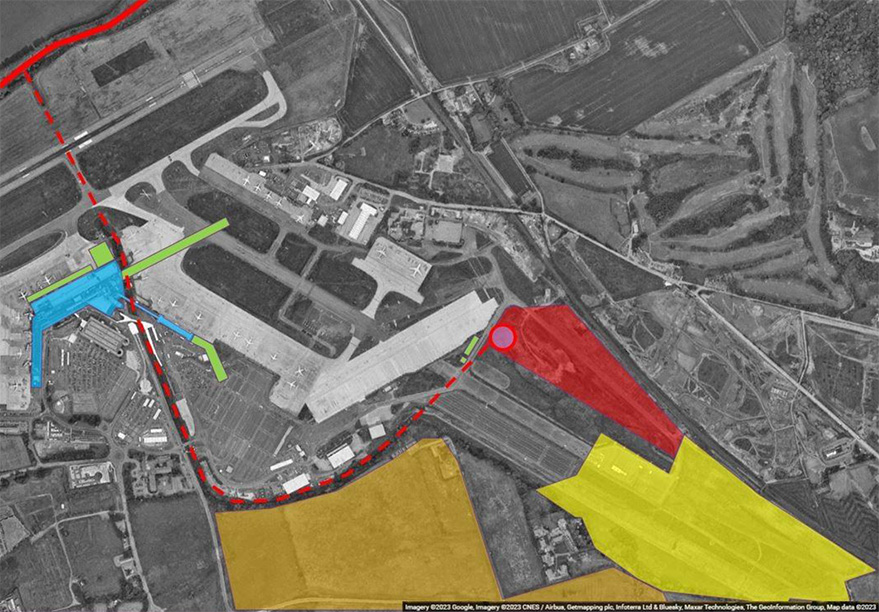
Hamilton Heat Network
Lead organisation:
| Metric | Value |
|---|---|
| Annual Heat Demand (GWh) | 7.5 |
| Total CAPEX (£m) | 10.2 |
| IRR (%) | 17.8% |
| Lifetime Carbon Savings (tCO2) | -91(against a fully electric counterfactual) |
South Lanarkshire Council
Project Stage:
Pre-capital – Feasibility study complete
Technology type(s):
Proposed new heat network
Location:
Hamilton
Type of support:
£35,000 HNSU grant for feasibility study
Project Timeframe:
Feasibility report completed January 2023. Intention to progress to OBC.
Project description:
Proposed heat network centred around the council headquarters, and investigating the connection of several other non-domestic public sector properties, tower blocks and proposed new-build housing in the area. Ground source heat pumps are the recommended primary heat supply technology.
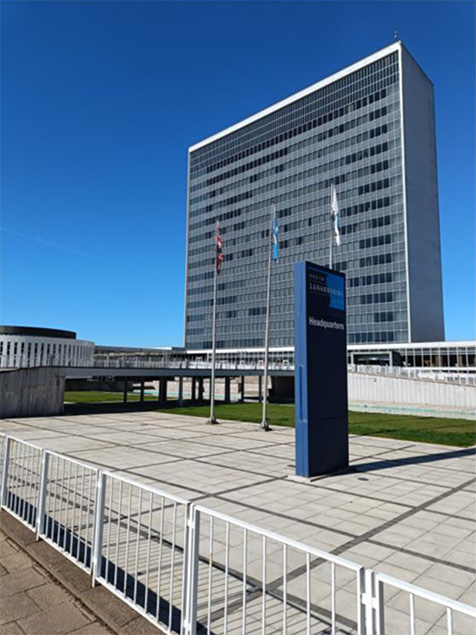
Blindwells Heat Network
Lead organisation:
Hargreaves Land
| Metric | Value |
|---|---|
| Annual Heat Demand (GWh) | 10.9 |
| Total CAPEX (£m) | 13.4 |
| IRR (%) | 3.9% |
| Lifetime Carbon Savings (tCO2) | 1,118 |
Project Stage:
Pre-capital – Detailed feasibility study complete
Technology type(s):
Proposed new heat network
Location:
Blindwells, East Lothian
Type of support:
£30,000 HNSU grant
Project Timeframe:
Feasibility report completed February 2023
Project description:
The project involves the redevelopment of a former quarry and mine for new-build residential, public and commercial properties. A suggested approach is recovering heat from minewater, which will be fed through an ambient loop to households, each of which will have individual heat pumps.
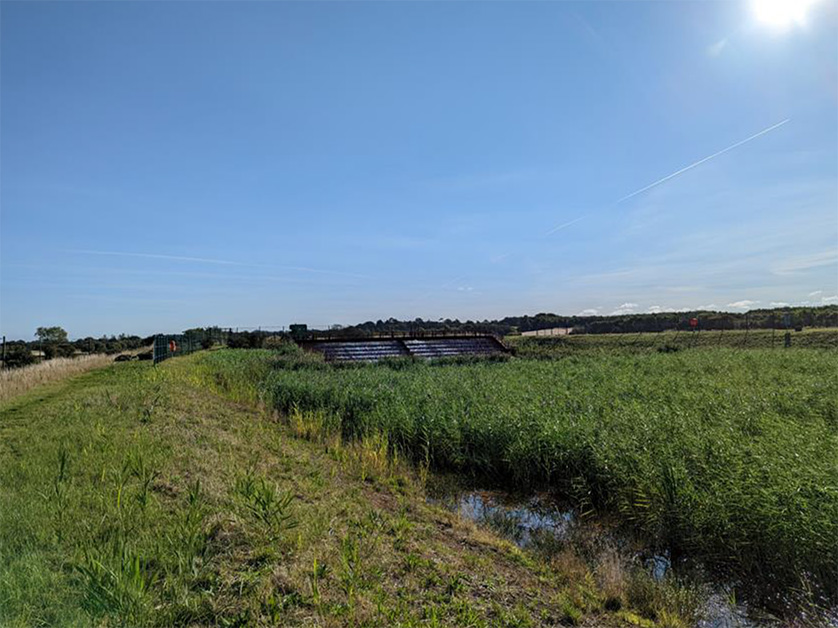
Eastwood Park
Lead organisation:
East Renfrewshire Council
| Metric | Value |
|---|---|
| Annual Heat Demand (GWh) | 9.8 |
| Total CAPEX (£m) | 14.7 |
| IRR (%) | 5.6% |
| Lifetime Carbon Savings (tCO2) | 62,258 |
Project Stage:
Pre-capital – Detailed feasibility study complete
Technology type(s):
Proposed new heat network
Location:
Eastwood Park, Glasgow
Type of support:
£38,413 HNSU grant
Project Timeframe:
Feasibility study completed January 2024. Council considering next steps.
Project description:
This project proposes a new heat network with sewer water heat recovery as a potential source. The proposed heat network would supply public sector buildings including Eastwood Park Campus, schools and a leisure centre.
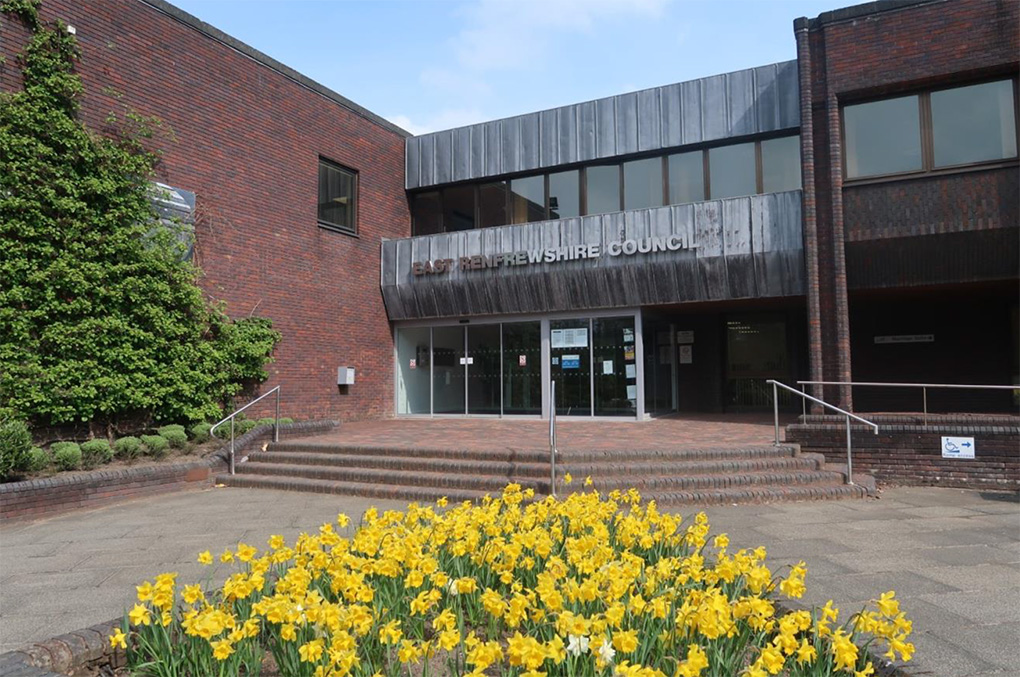
St Andrews University Heat Network Extension
Lead organisation:
University of St Andrews
| Metric | Value |
|---|---|
| Annual Heat Demand (GWh) | 2.9 |
| Total CAPEX (£m) | 8.7 |
| IRR (%) | 17% |
| Lifetime Carbon Savings (tCO2) | 75,488 |
Project Stage:
Pre-capital – Detailed feasibility study
Technology type(s):
Extension of existing heat network (heat source: biomass)
Location:
St Andrews, Fife
Type of support:
£50,000 HNSU grant
Project Timeframe:
Feasibility study completed in March 2024. Stakeholders considering next steps.
Project description:
This project proposes the extension of an existing biomass heat network in and around St Andrews. Since its commissioning in 2017 the existing heat network, sourced by a 6.5MW biomass boiler has provided heating and hot water to 50 University campus buildings via 27 km of pipe, accumulating savings of 20,000 tCO2e. The feasibility study will explore different options to identify a preferred extension scenario, which could include public sector buildings, schools and hospitality venues.

Dundee Baldovie
Lead organisation:
MVV Environment Baldovie Ltd
Project Stage:
Pre-capital – Detailed feasibility study complete
Technology type(s):
Proposed new heat network
Location:
Whitefield & Douglas area, Dundee
Type of support:
£49,974 HNSU grant
Project Timeframe:
Feasibility study completed February 2024. Stakeholders considering next steps.
Project description:
This project proposes the creation of a heat network for the Whitefield and Douglas area with heat supply from the Baldovie Energy from Waste facility. The study will assess potential anchor loads in the vicinity of the Energy from Waste facility, and the potential to extend towards the city centre.
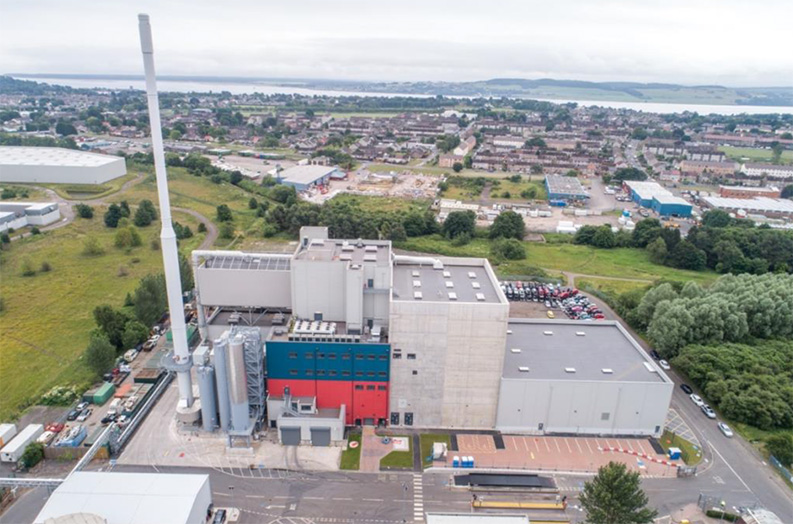
Paisley East
Lead organisation:
Renfrewshire Council
Project Stage:
Pre-capital – Detailed feasibility study
Technology type(s):
Proposed new heat network
Location:
Paisley East
Type of Support:
Up to £50,000 HNSU grant
Project Timeframe:
Feasibility report completed March 2024. Council considering next steps.
Project description:
Paisley Council are investigating a district heating network in Paisley East connecting the Town Hall, Paisley Abbey, Renfrewshire House, Lagoon Leisure Centre, Police station and some council-owned residential housing. Potential heat sources include wastewater heat recovery, river, ground and air source heat pumps.
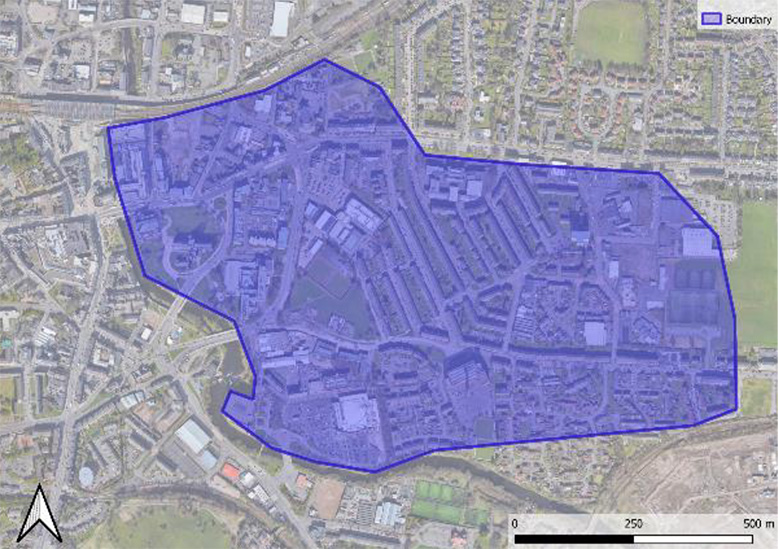
Paisley West
Lead organisation:
Renfrewshire Council Paisley Central (Paisley East and West)
| Metric | Value |
|---|---|
| Annual Heat Demand (GWh) | 49.9 |
| Total CAPEX (£m) | 71.4 |
| IRR (%) | 8% |
| Lifetime Carbon Savings (tCO2) | Considerable |
Project Stage:
Pre-capital – Detailed feasibility study
Technology type(s):
Proposed new heat network
Location:
Paisley West
Type of Support:
Up to £50,000 HNSU grant
Project Timeframe:
Feasibility report completed March 2024. Council considering next steps.
Project description:
Paisley Council is investigating the potential for a district heating network in Paisley West. Potential connections include the University of the West of Scotland, Piazza shopping centre, Hotel planned near Barga, Castlehead Highschool, Royal Alexandria Hospital, planned new development around Paisley shopping centre and museum and residential areas. Potential heat sources include wastewater heat recovery, river, ground and air source heat pumps.
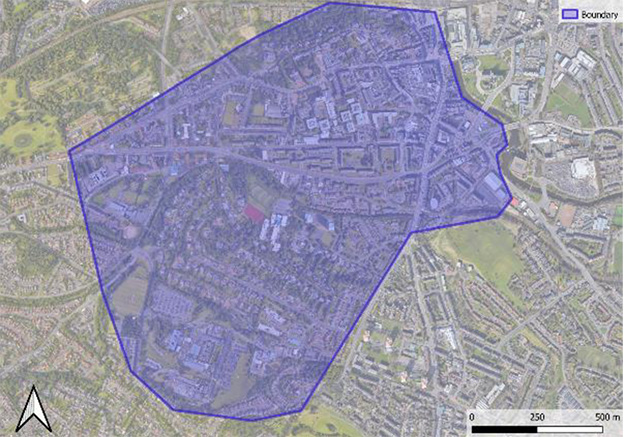
Renfrewshire Council is looking to combine the Paisley East and Paisley West feasibility studies into one heat network opportunity that combines both areas (Paisley Central).
Paisley North
Lead organisation:
Renfrewshire Council
| Metric | Value |
|---|---|
| Annual Heat Demand (GWh) | 11.2 |
| Total CAPEX (£m) | 9.2 |
| IRR (%) | 10% |
| Lifetime Carbon Savings (tCO2) | 86,191 |
Project Stage:
Pre-capital – Detailed feasibility study
Technology type(s):
Existing heat network extension
Location:
Paisley North
Type of Support:
Up to £50,000 HNSU grant
Project Timeframe:
Feasibility report completed March 2024. Council considering next steps.
Project description:
Paisley Council are exploring extending the existing AMIDS heat network in Paisley South with the proposed area being Paisley North. Potential connections include Glasgow International Airport, hotels south of the airport, education buildings and future industrial buildings at the AMIDS development. The existing AMIDS heat source is a wastewater treatment works. Alternative (or additional) heat sources include river, ground and air source heat pumps.
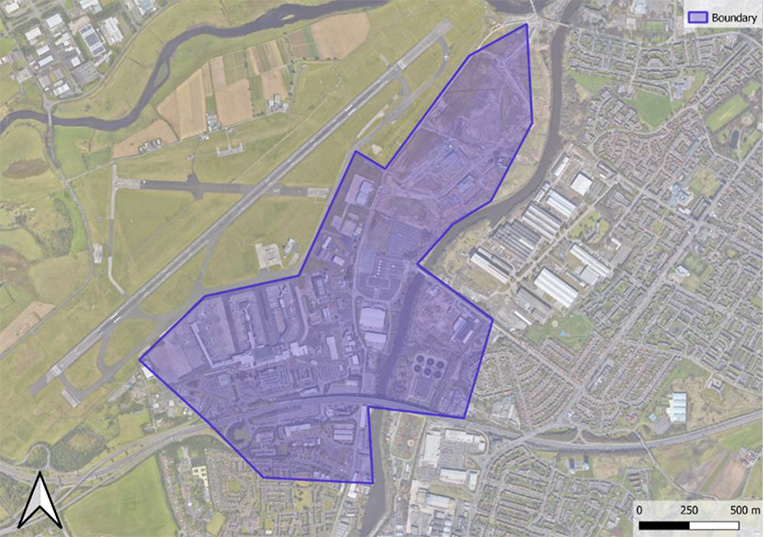
Callendar Park
Lead organisation:
Falkirk Council
| Metric | Value |
|---|---|
| Annual Heat Demand (GWh) | 6.2 |
| Total CAPEX (£m) | 13.3 |
| IRR (%) | 1.7% |
| Lifetime Carbon Savings (tCO2) | 120,110 |
Project Stage:
Pre-capital – Detailed feasibility study
Technology type(s):
Existing heat network extension
Location:
Callendar Park, Falkirk
Type of Support:
£40,141 HNSU grant
Project Timeframe:
Feasibility report completed April 2024. Council considering next steps.
Project description:
Falkirk Council is investigating how to upgradeand extend an existing gas CHP heat network in the Callendar Park area. The CHP system currently powers 9 of the 11 tower blocks in the area and requires upgrading in the next 5 years. The proposed extension would power the existing 9 tower blocks, in addition to Callendar Business Park and two local schools. There is also potential to extend to the town centre, towards the new Falkirk Town Hall.
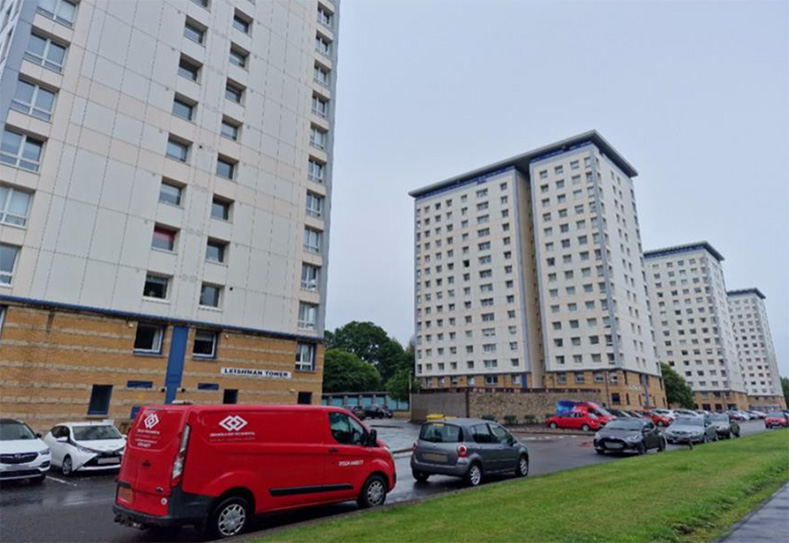
Tweedbank
Lead organisation:
Scottish Borders Council
Project Stage:
Pre-capital – Detailed feasibility study
Technology type(s):
Proposed new heat network
Location:
Tweedbank
Type of Support:
Up to £50,000 HNSU grant
Project Timeframe:
Feasibility report completed March 2024
Project description:
Scottish Borders Council are developing a new heat network that serves a mixed-use development. This development includes 300-400 properties, a community centre, care village and business space. Tweedbank is a key anchor load and there is potential to expand west to Galashiels and east to Melrose. There is also potential to extend to the town centre, towards the new Falkirk Town Hall.
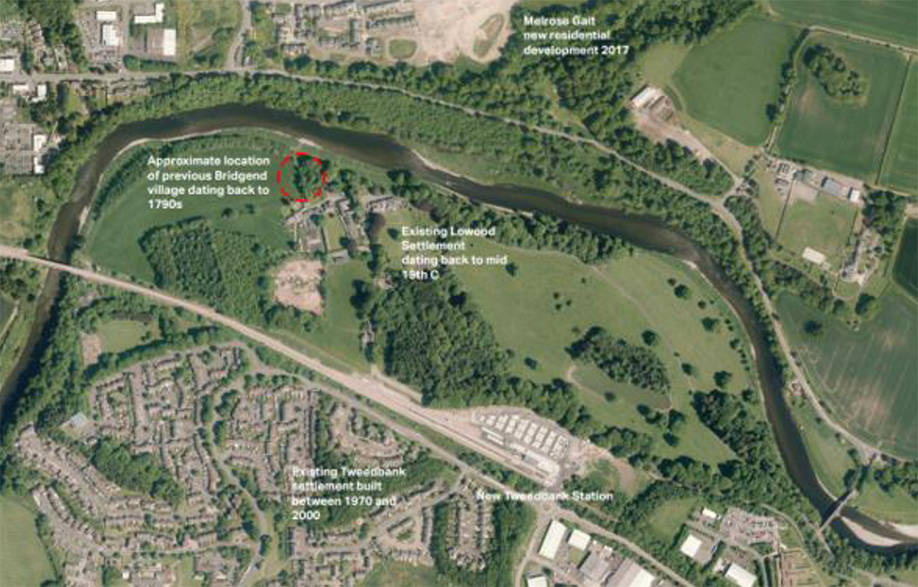
The Crichton Trust
Lead organisation:
Dumfries and Galloway Council
| Metric | Value |
|---|---|
| Annual Heat Demand (GWh) | 25.0 |
| Total CAPEX (£m) | 24.3 |
| IRR (%) | 8.3% |
| Lifetime Carbon Savings (tCO2) | 231,073 |
Project Stage:
Pre-capital – Detailed feasibility study
Technology type(s):
Proposed new heat network
Location:
Crichton Estate
Type of Support:
£50,000 HNSU grant
Project Timeframe:
Feasibility report completed April 2024. Stakeholder considering next steps.
Project description:
The Crichton Trust are developing a new heat network that serves the mixed-use buildings on Crichton Estate, Dumfries and Galloway College, Scottish Rural Agricultural College, Brownhill Primary School, 3 NHS buildings and domestic properties. Potential heat sources include ground source heat pump, river source heat pump and wastewater treatment plant.

University of Stirling
Lead organisation:
University of Stirling
Project Stage:
Pre-capital – Detailed feasibility study
Technology type(s):
Decarbonising and expanding existing combined heat and power heat network
Location:
Stirling
Project Timeframe:
Feasibility report due September 2024
Type of Support:
Up to £50,000 HNSU grant
Project description:
The University of Stirling are looking into decarbonising and expanding the existing heat network on campus. The pre-feasibility study identified that the optimal route to decarbonisation was through the installation of combination of ground source heat pump and air source heat pumps, with electric boilers installed for peaking. The proposed expansion would include four new connections including university buildings, a local hotel and innovation park with the potential to also connect additional neighbouring properties.
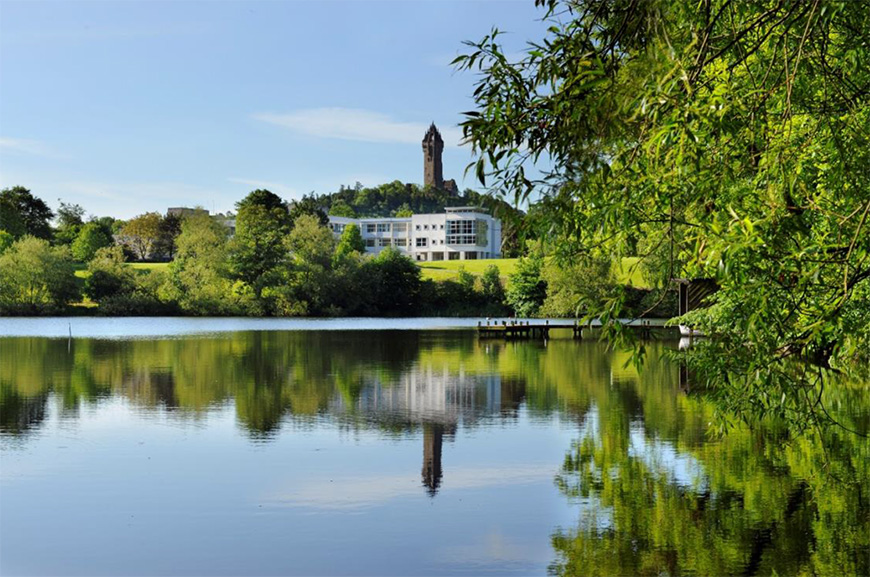
Greenock River Clyde Homes
Lead organisation:
River Clyde Homes
Project Stage:
Pre-capital – Detailed feasibility study
Technology type(s):
Expansion of existing heat network
Location:
Greenock
Project Timeframe:
Feasibility report due September 2024
Type of Support:
Up to £50,000 HNSU grant
Project description:
River Clyde Homes are looking to expand their current heat network at Broomhill. The existing energy centre serves 517 homes and currently relies on biomass. There are an additional two thousand of the Association's housing stock located within a 2km radius that are not currently connected to the network. The association would also consider expanding the network to include buildings and property owners not within the RCH Group including Inverclyde Council, NHS and other social landlords within the Central Greenock area who own and maintain schools, leisure centres, health care centres and hospitals.

Elgin Town Centre
Lead organisation:
Moray Council
Project Stage:
Pre-capital – Detailed feasibility study
Technology type(s):
Proposed new heat network
Location:
Elgin City
Project Timeframe:
Feasibility report due September 2024
Type of Support:
Up to £50,000 HNSU grant
Project description:
Moray Council intend to undertake a feasibility study looking at combining two potential heat network areas as identified in their LHEES. Those areas include the town centre of Elgin and the adjacent area around the Moray Leisure Centre and Elgin Academy. The centre of Elgin includes buildings such as Elgin Town Hall, Elgin Library, Moray Council HQ and Moray Growth Deal projects in South Street.

Abertay University
Lead organisation:
Abertay University
Project Stage:
Pre-capital
Technology type(s):
Proposed new heat network
Location:
Abertay University, Dundee
Project Timeframe:
On-going
Type of Support:
HNSU critical-friend support
Project description:
The project focuses on the energy centre which is located within an existing building on the Abertay campus. The HNSU are supporting Abertay University to determine the scope and technical solution of the project and assess whether a new heat network for the campus would be financially viable on its own and if not, providing clarification on any project dependencies. Building level solutions, small sewer pipe connection and large sewer pipe connection are also being considered as options.
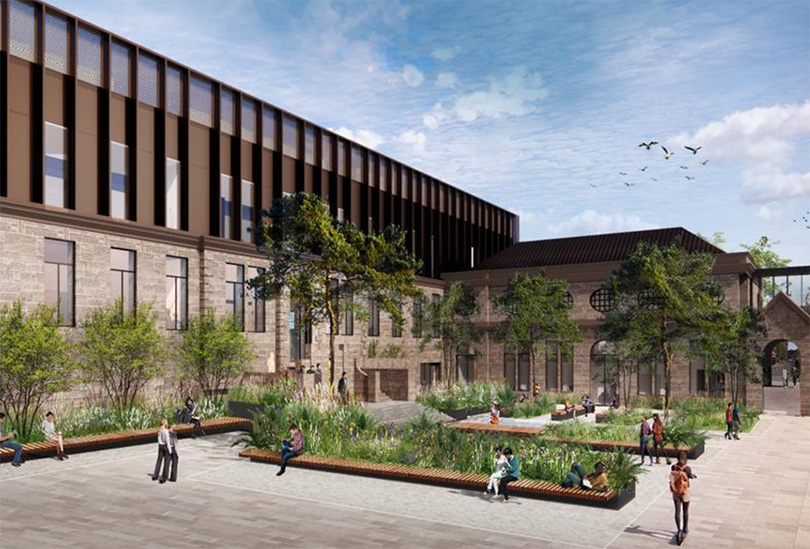
Old Town Edinburgh
Lead organisation:
City of Edinburgh Council
Project Stage:
Pre-capital – Detailed feasibility study
Technology type(s):
Proposed new heat network
Location:
Edinburgh
Project Timeframe:
Feasiblity report due December 2024
Type of Support:
Up to £50,000 HNSU grant
Project description:
This detailed feasibility study is looking to determine whether a heat network located in the prospective heat network zone of the Old Town and Southside in Edinburgh is likely to be feasible and viable. Potential heat sources include two major sewers as well as the Duddingston Loch and the park surrounding Arthur’s Seat. Potential connections include council owned buildings such as Waverly Court, the City Chambers, Royal Mile Primary School, the Central Library, St Tomas of Aquin’s R.C. High School, Boroughmuir High School, and the Royal Commonwealth Pool.
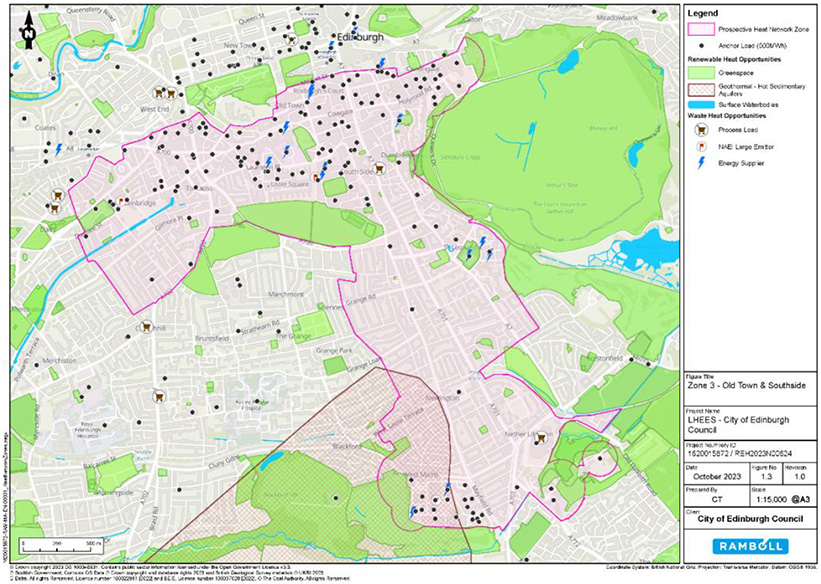
Contact
Email: HeatNetworkFund@gov.scot
There is a problem
Thanks for your feedback